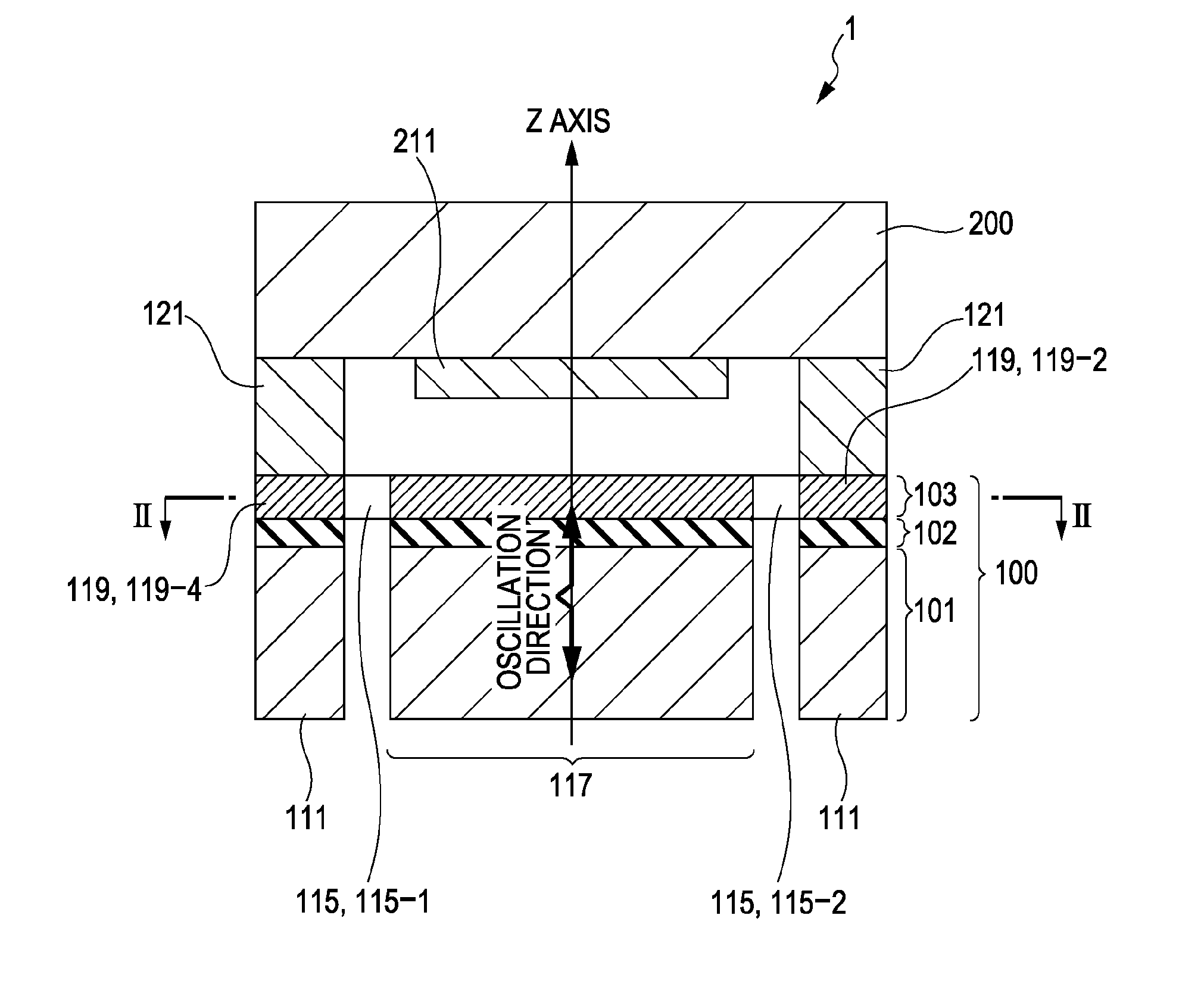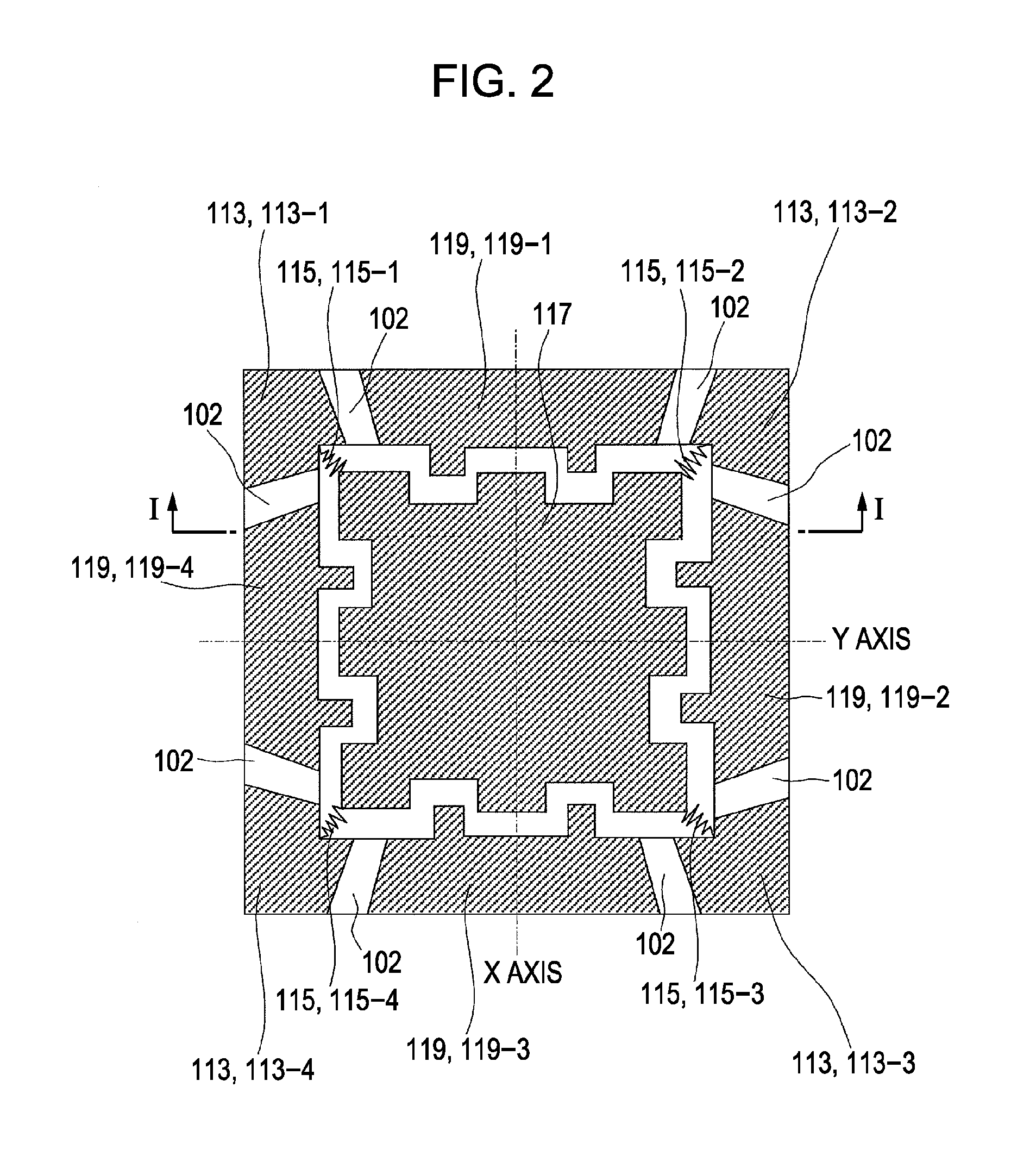Inertial sensor and electrical or electronic device
a sensor and inertial sensor technology, applied in the direction of turn-sensitive devices, acceleration measurement using interia forces, instruments, etc., can solve the problems of complex apparatus structure, inability to realize practical use, and inability to obtain angular velocity sensors about the three axes. to achieve the effect of simple harmonic motion, simple harmonic motion and reduced space for installing inertial sensors
- Summary
- Abstract
- Description
- Claims
- Application Information
AI Technical Summary
Benefits of technology
Problems solved by technology
Method used
Image
Examples
Embodiment Construction
[0028]An inertial sensor according to an embodiment of the present invention will now be described with reference to FIGS. 1 and 2.
[0029]FIG. 1 is a vertical sectional view of the inertial sensor including the line I-I in FIG. 2. FIG. 2 is a transverse sectional view thereof including the line II-II in FIG. 1. In the present embodiment, the inertial sensor including an electrostatic driving type oscillator exhibiting oscillation along a single axis will be explained as an example.
[0030]Referring to FIGS. 1 and 2, supports 113 (113-1 to 113-4) are arranged on a frame base 111. The base 111 is composed of, for example, a silicon substrate 101. The supports 113, composed of a silicon layer 103, are arranged at, for example, the respective corners of the base 111 with an insulating layer 102 therebetween. The supports 113 support an oscillator 117 through respective elastic supporting members 115 (115-1 to 115-4) so that the oscillator 117 can exhibit simple harmonic motion along a Z ax...
PUM
 Login to View More
Login to View More Abstract
Description
Claims
Application Information
 Login to View More
Login to View More - R&D
- Intellectual Property
- Life Sciences
- Materials
- Tech Scout
- Unparalleled Data Quality
- Higher Quality Content
- 60% Fewer Hallucinations
Browse by: Latest US Patents, China's latest patents, Technical Efficacy Thesaurus, Application Domain, Technology Topic, Popular Technical Reports.
© 2025 PatSnap. All rights reserved.Legal|Privacy policy|Modern Slavery Act Transparency Statement|Sitemap|About US| Contact US: help@patsnap.com



